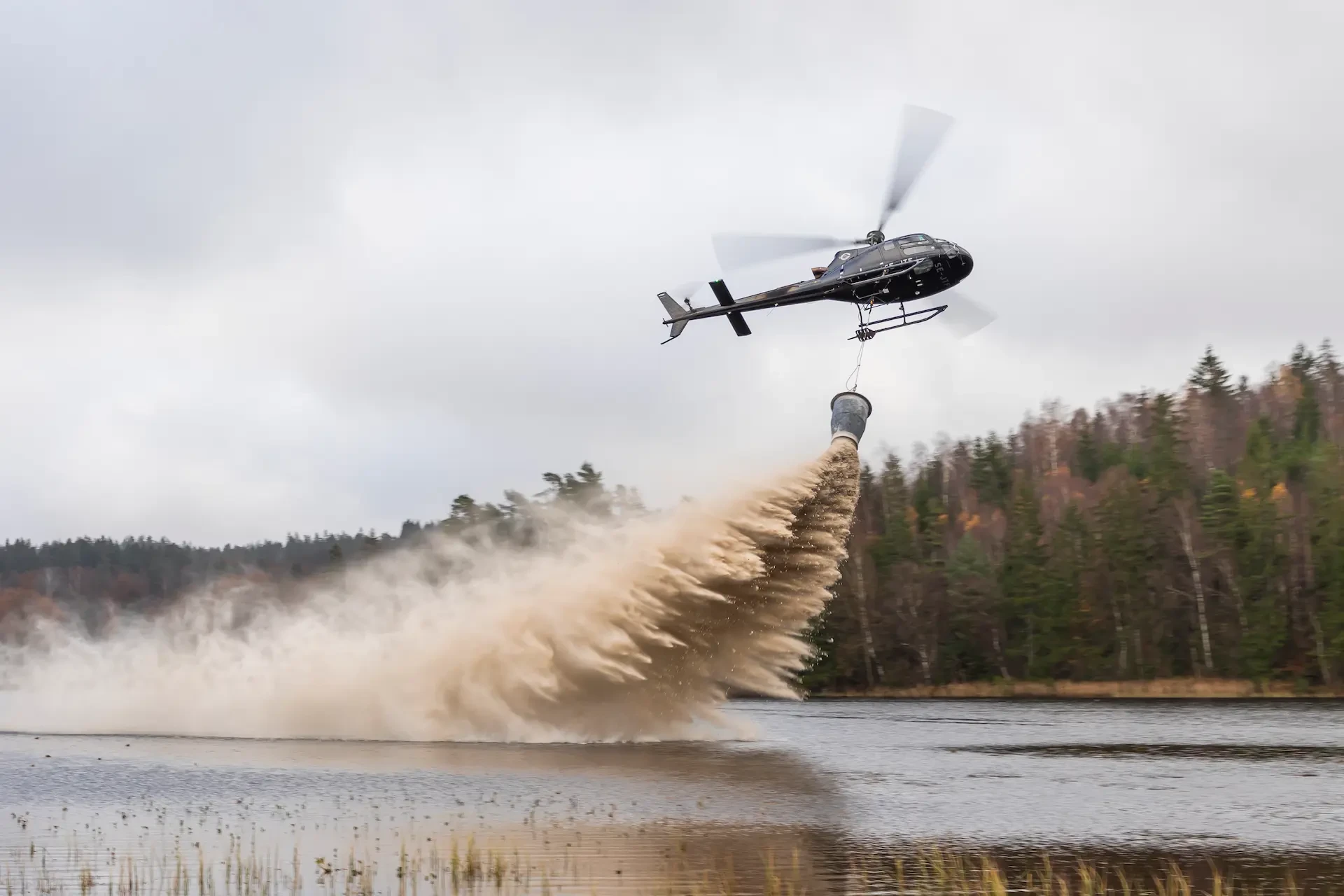It is generally believed that the acidification of Scandinavian lakes, which has been researched since the 1970s, is caused by human atmospheric pollution. Jimmy van Drunen visited Scandair Helicopter to observe the Swedish operator’s participation in widespread lime-spreading conservation efforts to combat the acidification and mitigate the environmental harm it causes.
Acidification
When atmospheric pollution returns to Earth in the form of acid rain, making the freshwater lakes acidic, leading to the loss of certain fish species such as roach, whitefish, arctic char, and trout. Acidic water also destroys zooplankton and phytoplankton such as green algae. As an example of the environmental harm, if a salmon does not find a good stream with the right water quality, it will not swim up to spawn and no reproduction occurs. The importance of good water is therefore very important for aquatic life so, the Scandinavian countries have taken measures that include regular pH monitoring to help work on limiting the extent of air pollution, and increasing the pH value of freshwater by spraying lime (calcium) on lakes. The lime has been in use since the 1980s to neutralize the pH of the water and restore its natural balance.
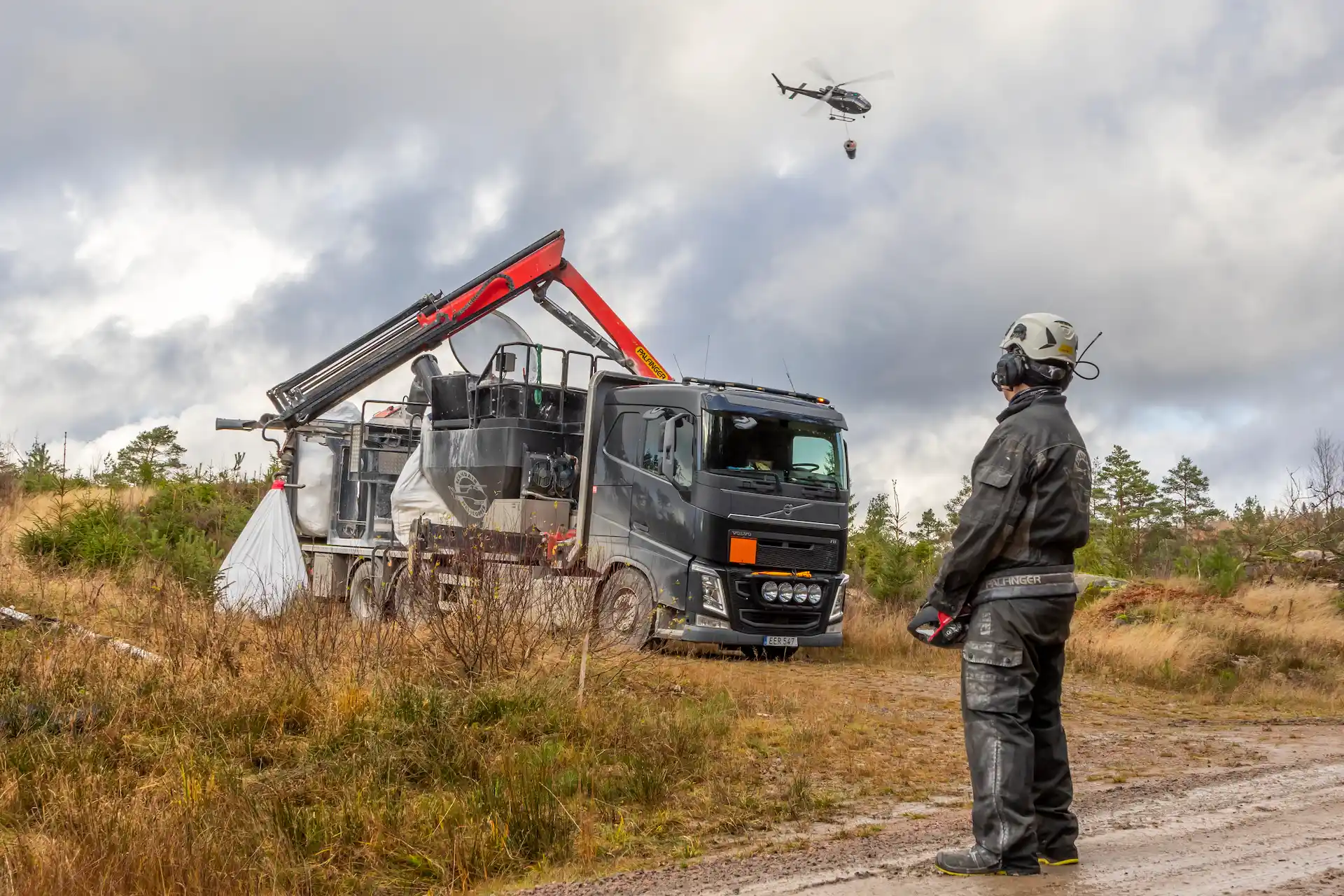
Helping Hand
There are around 22,000 lakes in Sweden that each cover an area of more than 10 hectares. Each region has its own environmental department which is responsible for the objectives and conservation of nature and the water board. The material, GX-lime, is used for liming in the Halland region, in the south of Sweden, where it is spread over lakes and swamps. With the addition of water, the GX-lime material is less dusty than a drier variant of limestone and the amount of material to be spread is determined by the level of acidity in the area to be sprayed/spread. The spreading of lime is assigned to helicopters such as those belonging to Scandair Helicopter, a Swedish material distribution company specializing in environmental contracts and this type of work. Large lakes can also be sprinkled by boats, which spread the mixture using hoses.
With over 30 years’ experience in studying and monitoring the lakes, Myrica liming consultant Mr. Anders Svahnberg is an expert in the region. He explained that the properties of various lime spreading products had been investigated in trial operations conducted in the areas around Värnamo since 1990. “The aim is to develop a product more suitable for liming on wetlands than limestone flour,” he stated. “The experimental activities have been developed in various rounds and conducted within the areas designated FL, BO, GK and TB. The products examined are different qualities of coarse lime, granules and waterworks lime (vomber).” He elaborated that the operation and selection of experimental products was guided primarily by a list of objectives. It is desirable that the product suffers insignificant or no loss due to dusting and/or wind drift. More stable pH levels between liming events and longer duration of the liming effect are sought, compared with those provided by lime flour. Negative aesthetic effects must be as low as possible to minimise their impact on landowners, active outdoor life, etc. The results of the trials have gradually led to wetlands today being mainly limed with coarser lime products that insignificantly dust, or not at all.
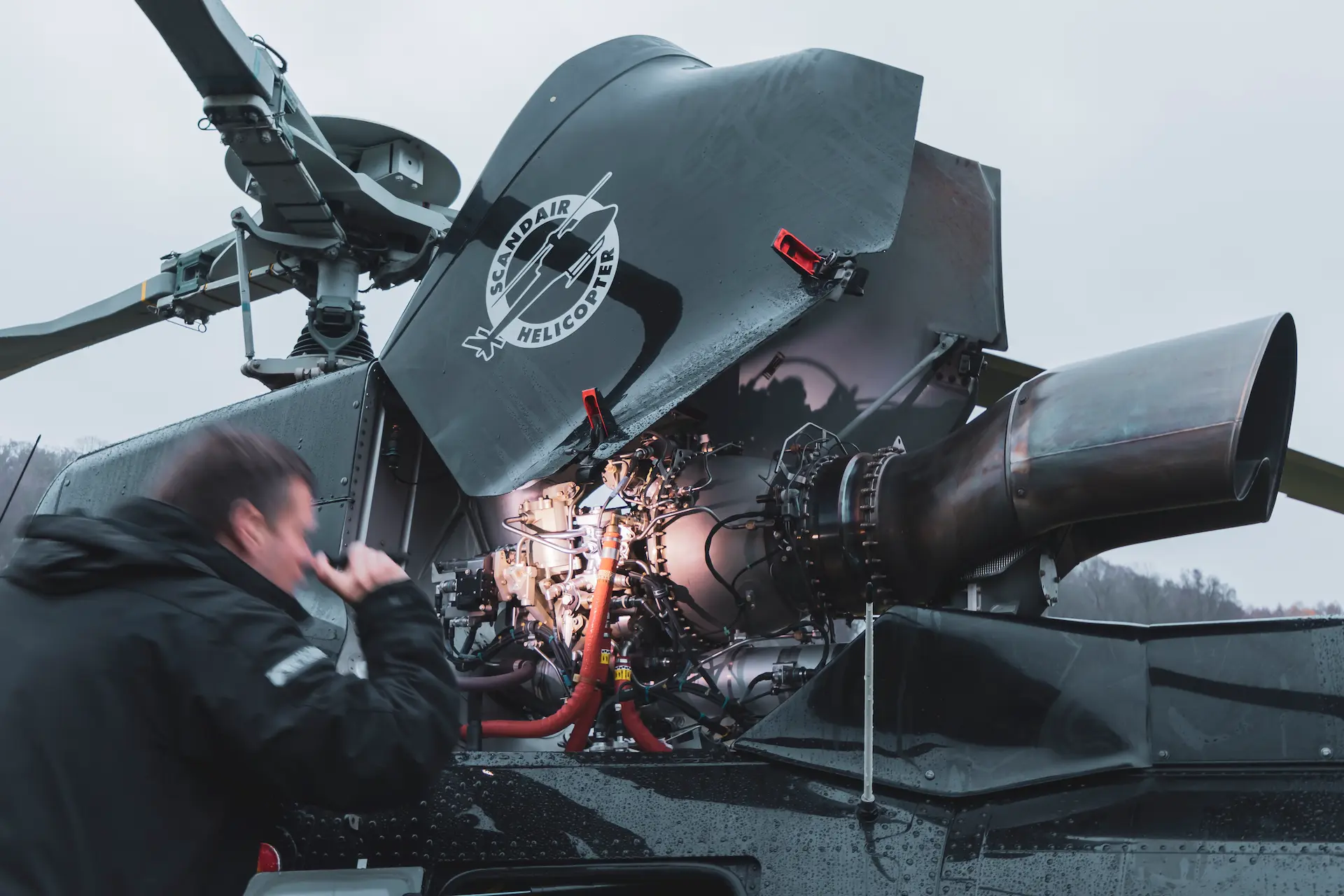
Helicopter Spreaders
Scandair is based in Hudiksvall, Sweden. The company’s three founding pilots, Marius Johansen, Pelle Jonsson and Fredrik Ulander, started the company in 2010 and have operated a number of AS350 and H125 aircraft since. Scandair currently operates a fleet of four late-model Airbus H125s, with the newest picked up this year from the Airbus factory and is currently flying on spraying work in Finland. Scandair acquired the fourth aircraft due to an increasing workload, especially during the high season. The H125 helicopter was chosen because of its lifting capacity, ample power, diversity and reliability, and the engine inlets are protected by Donaldson inlet barrier filters. For the type of work Scandair conduct, they need a strong, fast and small helicopter. Minimal size is important as it permits landings in confined spaces in the woods, dependent largely on the rotor diameter of the helicopter; the H125 is ideally suited for this work.
Scandair limes all year round, however the high season is from May to the end of November. “The acidity of lakes is measured about five times a year,” explained Lars Engelbrekts, one of Scandair's pilots. Engelbrekts is 37 years old and is rated on the Robinson R22 and the H125, with over 3,000 hours logged on the H125. Another regular activity for Scandair is scattering ash on young trees to improve the soil in the forest. Because this work should be done during the forest's growing season, such work usually begins in May when the snow has melted, and the roads are clear and continues through August. Scandair’s specially manufactured Volvo truck is designed for this type of work, kitted out as a tender to permit the helicopter to be used optimally, and stay airborne longer. The Volvo carries two hoistable buckets that the helicopter uses to dispense the lime, a built-in fuel tank with 2,400 liters of Jet-A1, and can transport 5,000kgs of spreadable material. All company staff are well attuned to each other and the particular demands of the work, so can effectively conduct operations from many work locations within a short timeframe.
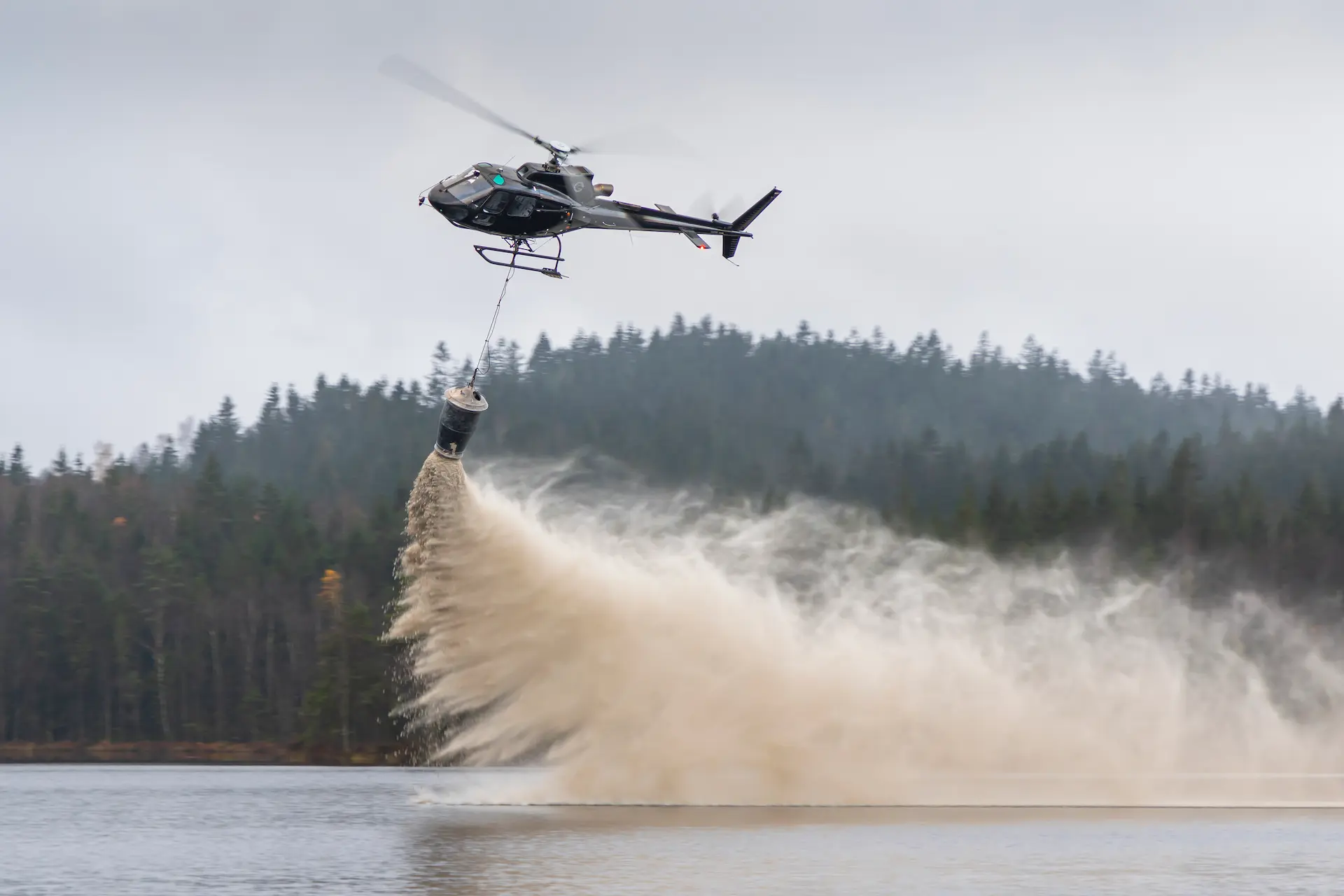
During HeliOps’ visit, a job was underway about a half hour drive from Varberg. It is a typical Swedish forest environment, consisting of sturdy, tall coniferous trees. In an open area of woodland, about 20 bags of GX-lime in large plastic bags sit ready, already prepared for the job. The landing location has been identified earlier by the ground crew with their pickup car and they notify the pilot of any obstacles such as power lines, in case the helicopter needs to land for refuelling or other reasons. They also notify the truck drivers about the condition of the roads, the optimum routes in and out and whether key-codes are needed for access. The same information, plus an assessment of whether it is accessible to a trailer and a description of where to place the bags goes to the transport company delivering the lime. Once it has been established how many tons are required for an area, the lime is ordered from the mine (SMA mineral AB company), who dispatch it by road or rail to a terminal close to the area for uplifting by the transport company.
Weather
The weather plays a major role. On the Varberg job, the helicopter had been grounded the previous day due to bad weather. The low clouds also play a major role on this morning, forcing an unexpected landing near Gothenburg, enroute to the work location. Around 3:00 PM the pilot gets underway again and soon after, the helicopter is heard over the treetops. The gloss-black H125 comes into sight and, just before its arrival, some branches and trees are cut down as the landing zone is rather tight. The truck is completely set up and ready for use and the ground staff need only check the correct weights of the 1,500 kilograms of plastic bags before using them. The lime is loaded from the bags into the silo, through the hook arm and then passes through a large screw to the bucket. Each load is accurately weighed by the ground crew, as decreasing fuel during the flight allows the helicopter to carry progressively heavier payloads. One bucket is filled, while the other is picked up by the H125 with a sling.
After dropping each load, the helicopter can return and change buckets within a few minutes, making it a very efficient process. There is more than one full day’s work on this job, so the helicopter will stay overnight. The pilot and crew will drive to a nearby hotel and start early the following morning. They work seven-day shifts commencing each Tuesday, with one week on, one week off. In addition to the Volvo’s onboard supplies, an extra 36,000-liter heli-fuel trailer is available to tow behind the truck. This is often left at the hotels where the staff members stay. The truck is operated by the ground staff, of which Scandair employs 11, with three additional ground staff taken on during the high season. Engelbrekts started his career as ground crew with the company in 2013 and gained many years of experience on the truck before obtaining his pilot's license in 2016.
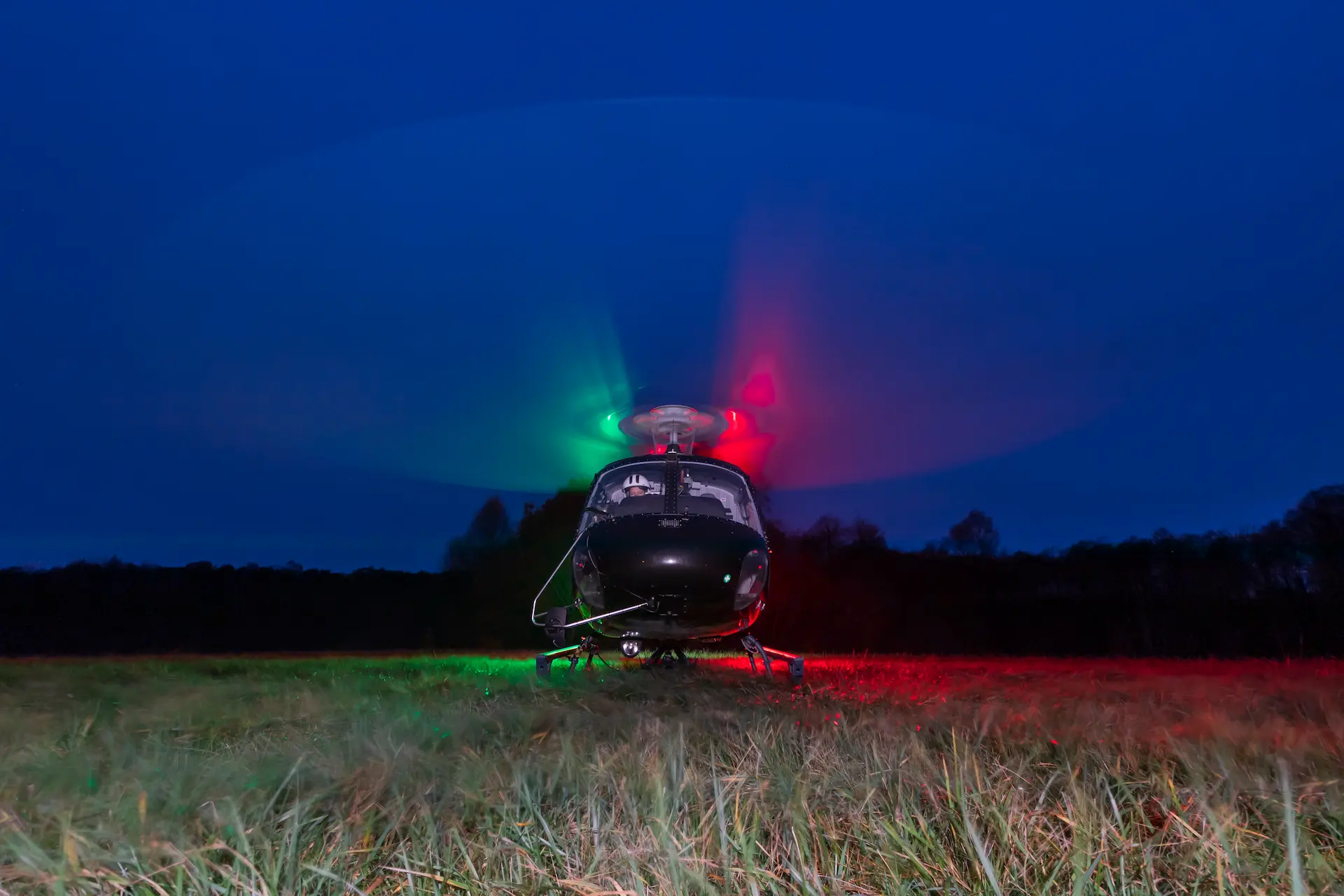
Bespoke Equipment
Scandair manufactures its own equipment, including a GPS-controlled bucket. The primary advantage of this is that the pilot can focus on flying at a low speed while the automatic GPS system indicates when and how much material to spread, based on the actual flying speed. All this leads to a very well organized and efficient process. On average, about 30 loads can be spread per hour and a hook arm capacity of 1,400 kg means that a lot of material falls from the sky. With an annual average of 600 flying hours per pilot, the Scandair fleet is a major player in this field and the company can also operate as an aerial asset for forest firefighting. Most flying hours are recorded during the high season, but every pilot is also busy in the other months and in the winter months, lime is also applied to frozen lakes to ensure that the melted snow mixes with the water. December is often the month in which employees are on vacation. This year, about 60,000 tons of material has been scattered across the Scandinavian Peninsula.
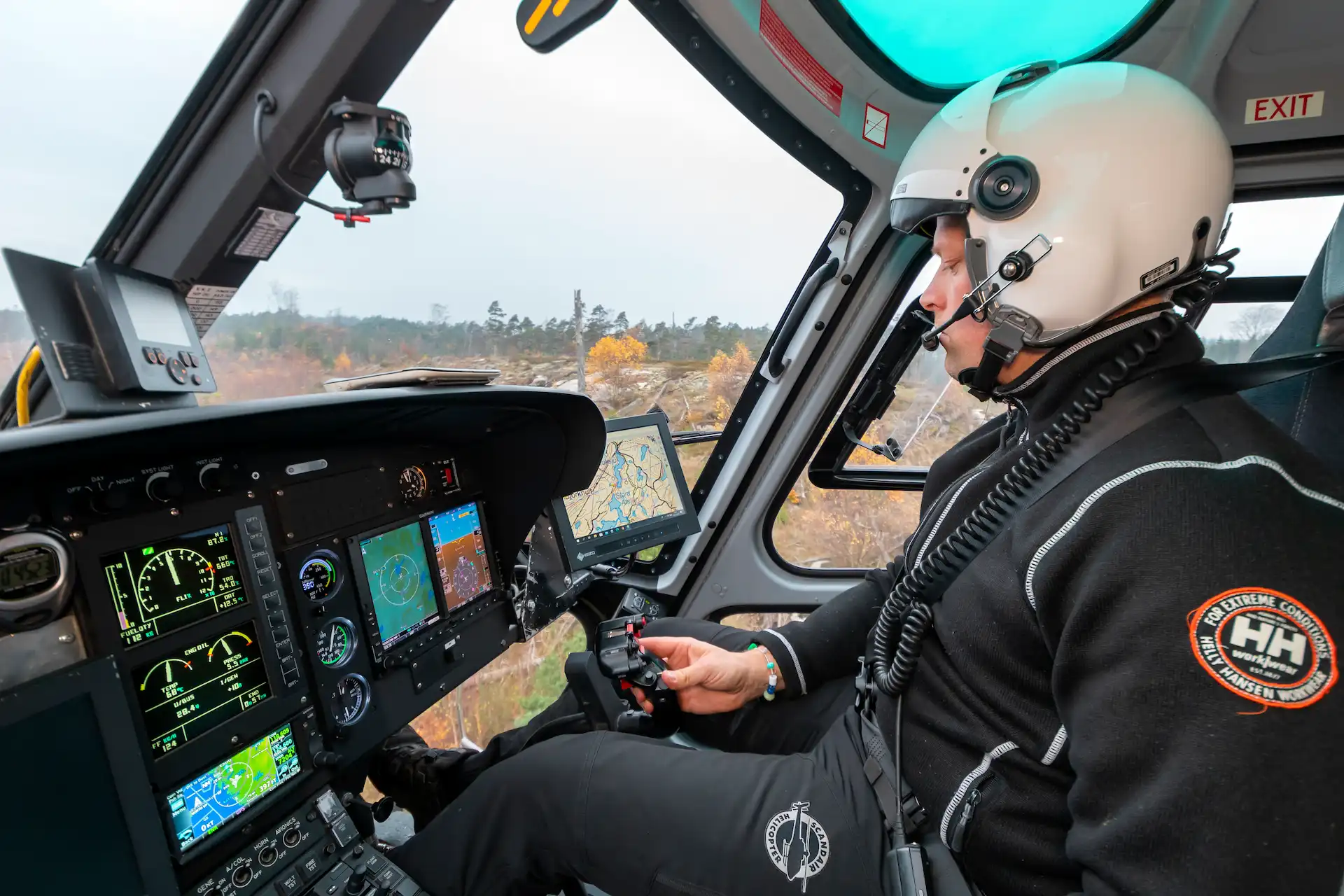
Covid has had little effect on the company as the staff has little contact with customers or people other than their colleagues. The crew for a job such as that discussed above consists of a pilot and three ground workers (one helper and two truck drivers). The truck drivers can operate independently at most locations, but the helper is there for the larger locations. Experience has shown that provided everyone took responsibility for their actions, there was little contact, and everyone remained healthy. During the pandemic however, it was difficult to find open hotels or motels for overnight stays. Most small hotels and motels were closed and the borders with Norway, a country where Scandair operates, were also closed for a time. Much Covid testing and a lot of resulting paperwork caused a large administrative impact on the company, but because Sweden did not go into lockdown, the company was able to continue its activities. Norway subsequently re-opened its borders and operations over the three countries are again, in full swing
.
 HOME
HOME


